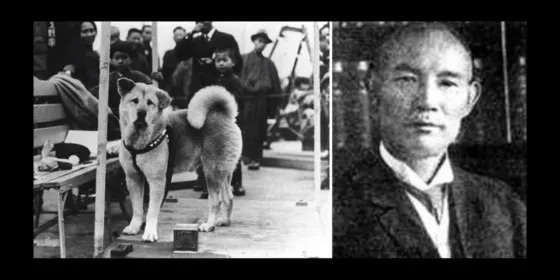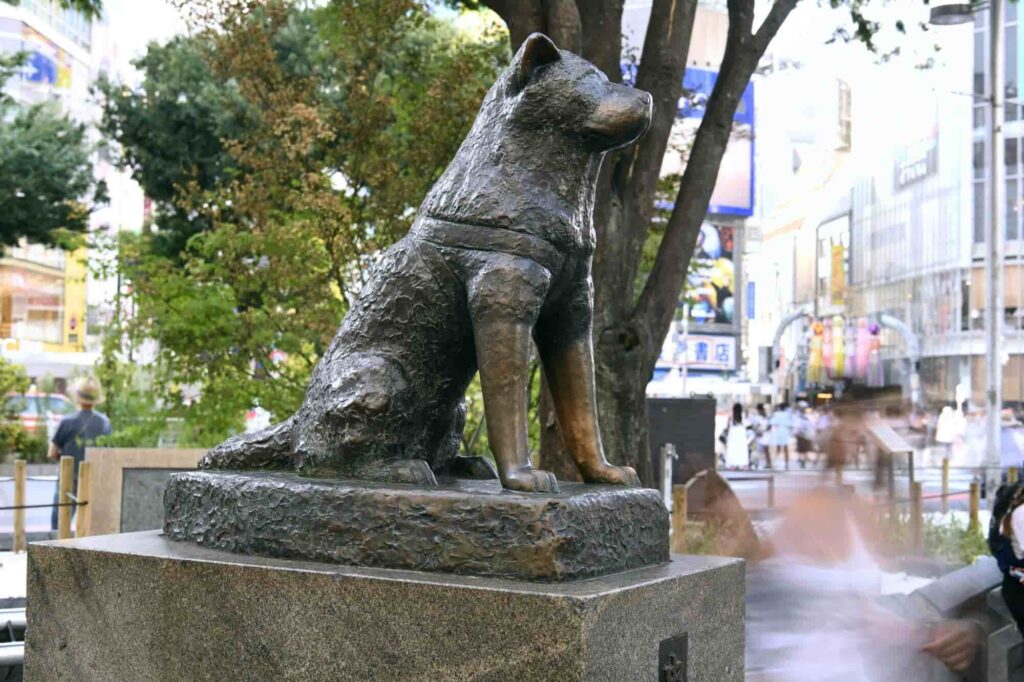This is a story which will change your perspective about love and loyalty forever. This is the story of Hachiko – The Faithful Dog.
The Tale of Hachiko
As we can contemplate that there was a dog named Hachiko. He was a purebred Japanese Akita dog owned by Hidesaburo Ueno, a professor at the Tokyo Imperial University, he brought him to live in Shibuya Tokyo, as his pet.
Hachiko was born on 10th November 1923, at a farm near the city of Odate, Akita Prefecture. Hachiko a dog’s tale is based on a true story, he was so devoted to his human that he waited for him each day at a Tokyo train station. During his owner’s life Hachiko saw him off from the front door and greeted him at the end of the day at the nearby Shibuya Station.
The pair continued their daily routine until May 1925, when Professor Ueno didn’t return on the usual train one evening. The professor suffered a heart stroke and died at the university and never returned to the train station where his friend Hachiko was waiting for him. Hachi continued his daily routine and waited for him at the station for more than nine years. Hachiko’s fidelity earned him the nickname “The Faithful Dog.”

Death of Hachiko
One morning on march 8, 1935, Hachiko was found dead. It is believed that he died due to natural causes. He took his final breath at the same place where he had waited for his owner’s return for nine years. He was 11 years old when he died. Although Hachiko’s life ended decades ago, his story continues to live on.
One of Ueno’s students saw the dog at the station and learned the history of Hachikō’s life. He returned frequently to visit the dog and over the years published several articles about Hachikō’s remarkable loyalty.
In 1932, one of these articles, published in a Tokyo Newspaper, threw the dog into the national spotlight. Hachikō became a national sensation. His faithfulness to his human’s memory impressed the people of Japan as a spirit of family loyalty all should try to achieve.
After Hachiko’s death, his body was preserved and placed at the National Science Museum of Japan in Tokyo. Additionally, a monument of Hachiko has been placed next to his owner’s tomb in Tokyo’s Aoyama cemetery.
Today the statue of Hachiko continues to stand in the same place, in front of the station of Shibuya. Hachikō’s legendary faithfulness became a national symbol of loyalty. In april 1934 a bronze statue of Hachiko was erected outside the Shibuya Station as a tribute to the dog.
Unfortunately, this statue was destroyed during World War II. Although the original Hachiko dog statue could not be restored, a new one replaced it in the same exact spot at the end of the war in 1948. The spot has become a popular and beloved neighbourhood park where tourists can honour and admire the unconditional love of this loyal dog.

Two traits excruciatingly important in Japanese culture and Hachiko’s importance as a national symbol can’t be over estimated. Every year on march 8th there is a ceremony held at Hachiko’s monument in Shibuya station. Hundreds of dog lovers often turn out to honor his memory and loyalty.
These stories spread so wide, that in 1987 the first movie was released. The Japanese language Hachikō Monogatari (‘The Tale of Hachiko’) was the number one movie in Japan at the time of its release.
Hachiko’s story received the Hollywood treatment in 2009 with the release of Hachi: A Dog’s Tale staring Richard Gere as an anglicized version of the real life professor Ueno. Hachikō plays an important part in the 1967 children’s book Taka-chan and I: A Dog’s Journey to Japan.








[…] one of my previous blogs, I’d mentioned Hachiko: The Faithful Dog who demonstrates that dogs are man’s best friend by patiently waiting for his owner for 11 […]